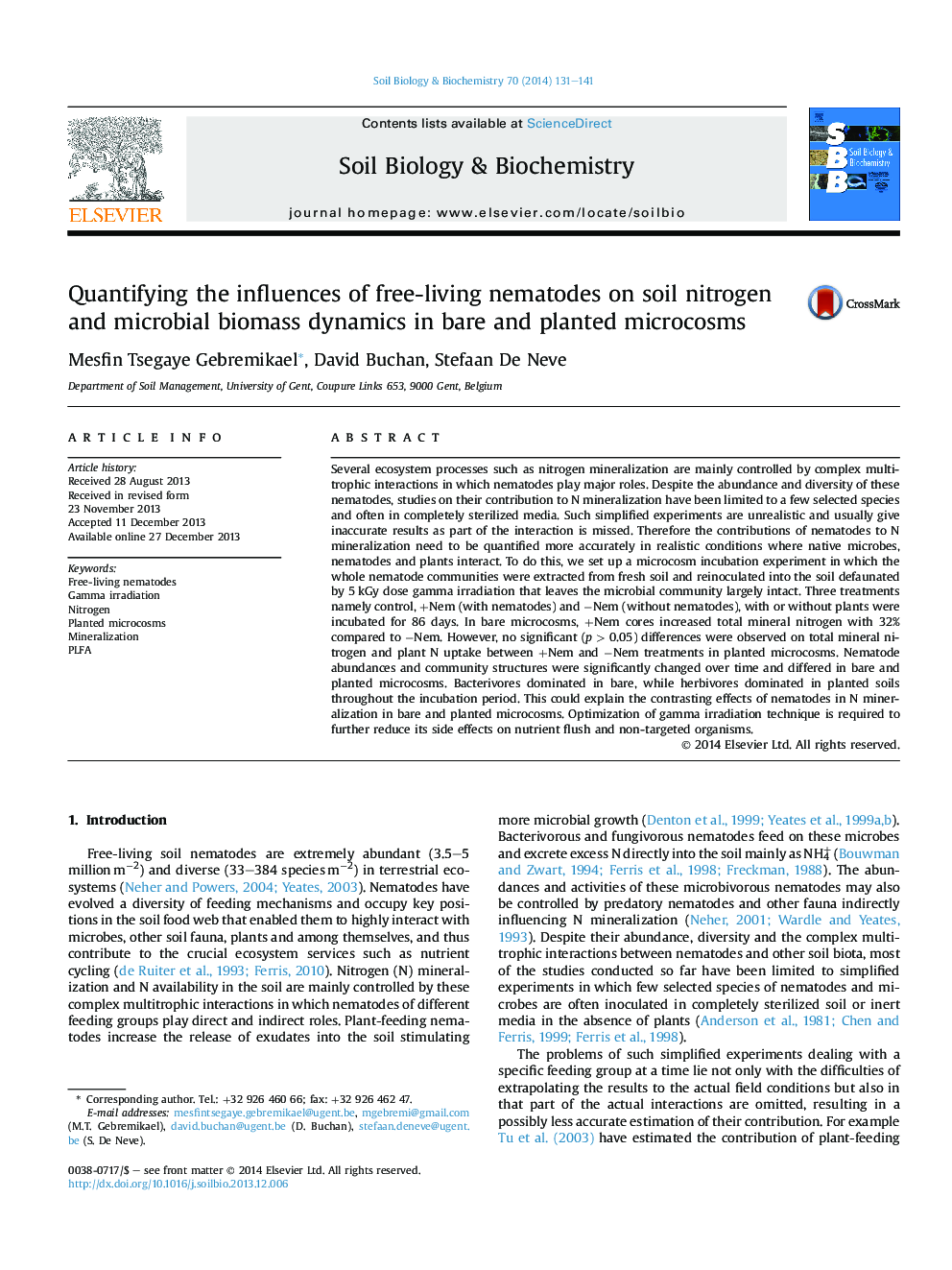| Article ID | Journal | Published Year | Pages | File Type |
|---|---|---|---|---|
| 8364940 | Soil Biology and Biochemistry | 2014 | 11 Pages |
Abstract
Several ecosystem processes such as nitrogen mineralization are mainly controlled by complex multitrophic interactions in which nematodes play major roles. Despite the abundance and diversity of these nematodes, studies on their contribution to N mineralization have been limited to a few selected species and often in completely sterilized media. Such simplified experiments are unrealistic and usually give inaccurate results as part of the interaction is missed. Therefore the contributions of nematodes to N mineralization need to be quantified more accurately in realistic conditions where native microbes, nematodes and plants interact. To do this, we set up a microcosm incubation experiment in which the whole nematode communities were extracted from fresh soil and reinoculated into the soil defaunated by 5 kGy dose gamma irradiation that leaves the microbial community largely intact. Three treatments namely control, +Nem (with nematodes) and âNem (without nematodes), with or without plants were incubated for 86 days. In bare microcosms, +Nem cores increased total mineral nitrogen with 32% compared to âNem. However, no significant (p > 0.05) differences were observed on total mineral nitrogen and plant N uptake between +Nem and âNem treatments in planted microcosms. Nematode abundances and community structures were significantly changed over time and differed in bare and planted microcosms. Bacterivores dominated in bare, while herbivores dominated in planted soils throughout the incubation period. This could explain the contrasting effects of nematodes in N mineralization in bare and planted microcosms. Optimization of gamma irradiation technique is required to further reduce its side effects on nutrient flush and non-targeted organisms.
Related Topics
Life Sciences
Agricultural and Biological Sciences
Soil Science
Authors
Mesfin Tsegaye Gebremikael, David Buchan, Stefaan De Neve,
